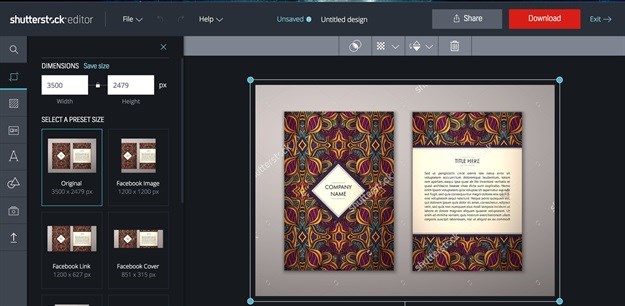






They are not alone in their misery I am afraid, they join the typists and photo-lab technician, doomed to the annals of history as a once thriving and useful career. Why dead I hear you ask? Well as I have said to anyone who asks about my industry, the democratisation of technology has ushered in cheap access to the tools of the trade once the preserve of advertising agencies – not individuals. Shutterstock, MacBooks and the Adobe suite of tools once hellishly expensive are now available to all and sundry regardless of the size of their business. Monthly payment options, a genius move from Adobe with their CreativeCloud has been a boon to the growth of freelancers and small agencies everywhere. And if you have ever read The Economist, more supply means less demand or downward pressure on prices. We will get to that later.
I also want to bring attention to Shutterstock and their great product offerings. They now have a feature that allows you to edit photographs directly from the site without having to use any editing programme, a killer offering for social media. Adobe will have to deal with this one real quick. Take a look below, holy crap right?

So here one can bypass the designer with a few clicks for any of your social media work.
The trick is however to have a good set of brand guidelines, this is not something you can necessarily download from the internet, big agencies charge big money for that. Oh wait you could actually, just go to Shutterstock and download a brand manual template... I see some folks starting to break out in a cold sweat now.
So where is there still space for graphic design? Well the thing with design is that it is an ever changing art-form, design democracy means that any agency worth their salt has to have the guts and the creative ingenuity to create something new and relevant with much shorter turnaround times than ever before – with a client that has to be at least as brave and creatively articulate in order to give the correct guidance. I believe we are in an era where we do not have a specific thematic style such as the 20s, 60s and 70s, which makes this all so complicated. We are in a bit of a grey area where we are still trying to meld together every great design done over the past few millennia. New technology and the 'maker' economy with the unlimited possibilities of the 3D printer is going to set the design trends for the near future I believe, so that will narrow it down a bit.
The design schools are changing their curriculum to make their students relevant for the current human capital needs. Now we have designers who can write code, take photos, write copy, edit images and make short videos. They are basically mini-agencies and expected to be master of all of these forms. The graphic designer is no longer constrained by a screen and mouse bequeathed to us by Steve Jobs, they are now constrained by the sheer speed of technology which demands output at warp speed. This means less time to craft, less time to think and less time to create. Not many of the older generation of graphic designers are going to make it. It is easier to download a template and adjust a few layers of a ready-made layout than pay for something built from scratch. What this ultimately does is reduce the value of your offering, the overall value of the trade, and in turn the value you can ascribe to your output.
The folks who are going to take this industry forward and benefit from it are the same people who have always done it. The crafters, the con artists and the fringe. Find the fringe and find the next big thing, be a crafter and be known for your single-minded purpose or be a con artist and use your powers of perception to bamboozle.
Brand design agencies do have a role to play in the future, and that is to create the box that creative folks have to work within. These are split into the high-concept creative which will never go away, to the technical rollout onto assorted elements which can be digitised and templatised. Two examples of this robotic design are BrandWizard and D'nA.
Traditional graphic design is dead, some people just don't know it yet. I do feel sorry for design graduates at the moment, but even experienced designers are being forced to become digital experts and retool their skills – and not everyone can or wants to. To succeed they have to be like a Swiss army knife, even with that weird thing on the back which nobody uses, but insist on having. Salaries will determine what skills are needed and which are no longer as valuable. So if you bemoan the crap salaries designers are being paid, perhaps it is a wakeup call for the industry to rethink its reason for being.
The irony is that the very tools meant to advance the industry will end up destroying them – Shutterstock, Adobe and Apple could very easily be substituted for the killer machines in Terminator.
*Note that Bizcommunity staff and management do not necessarily share the views of its contributors – the opinions and statements expressed herein are solely those of the author.*
